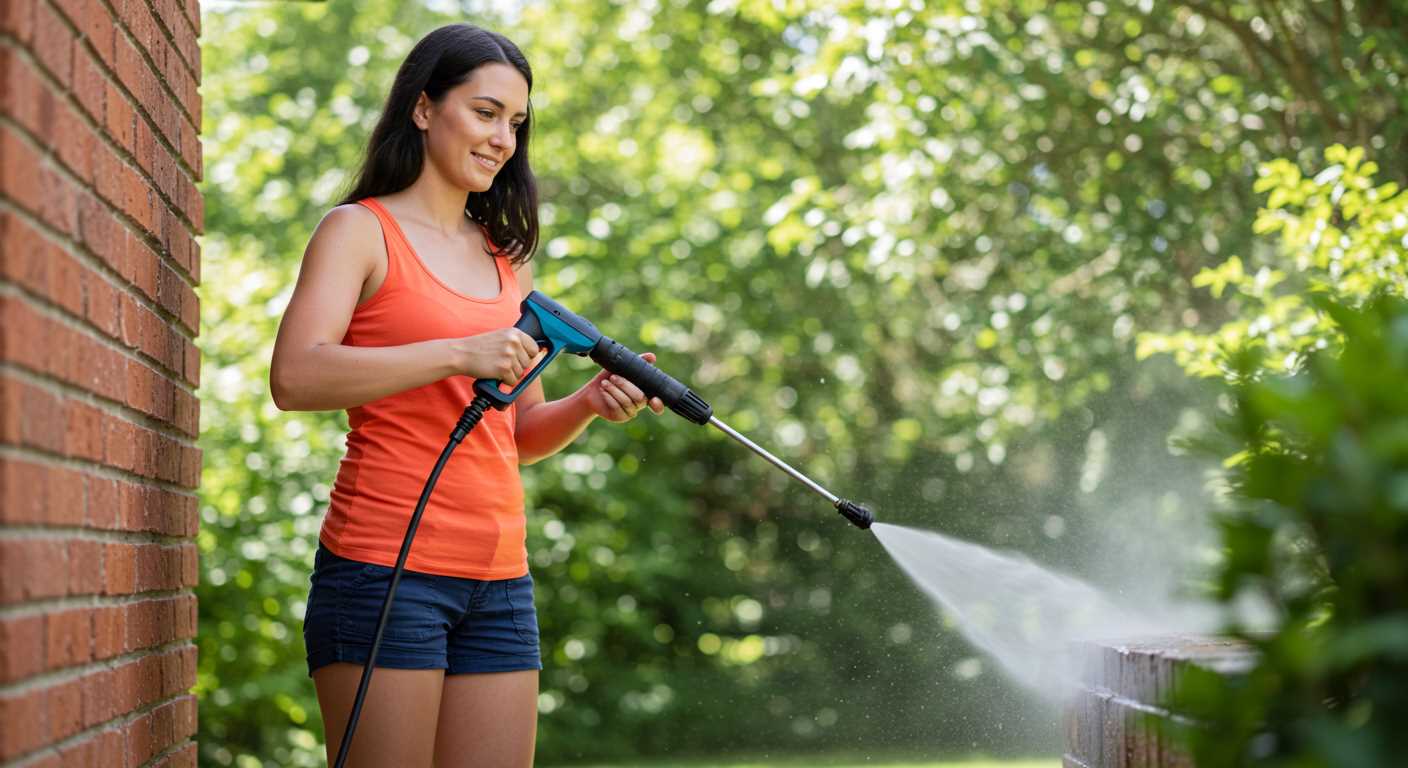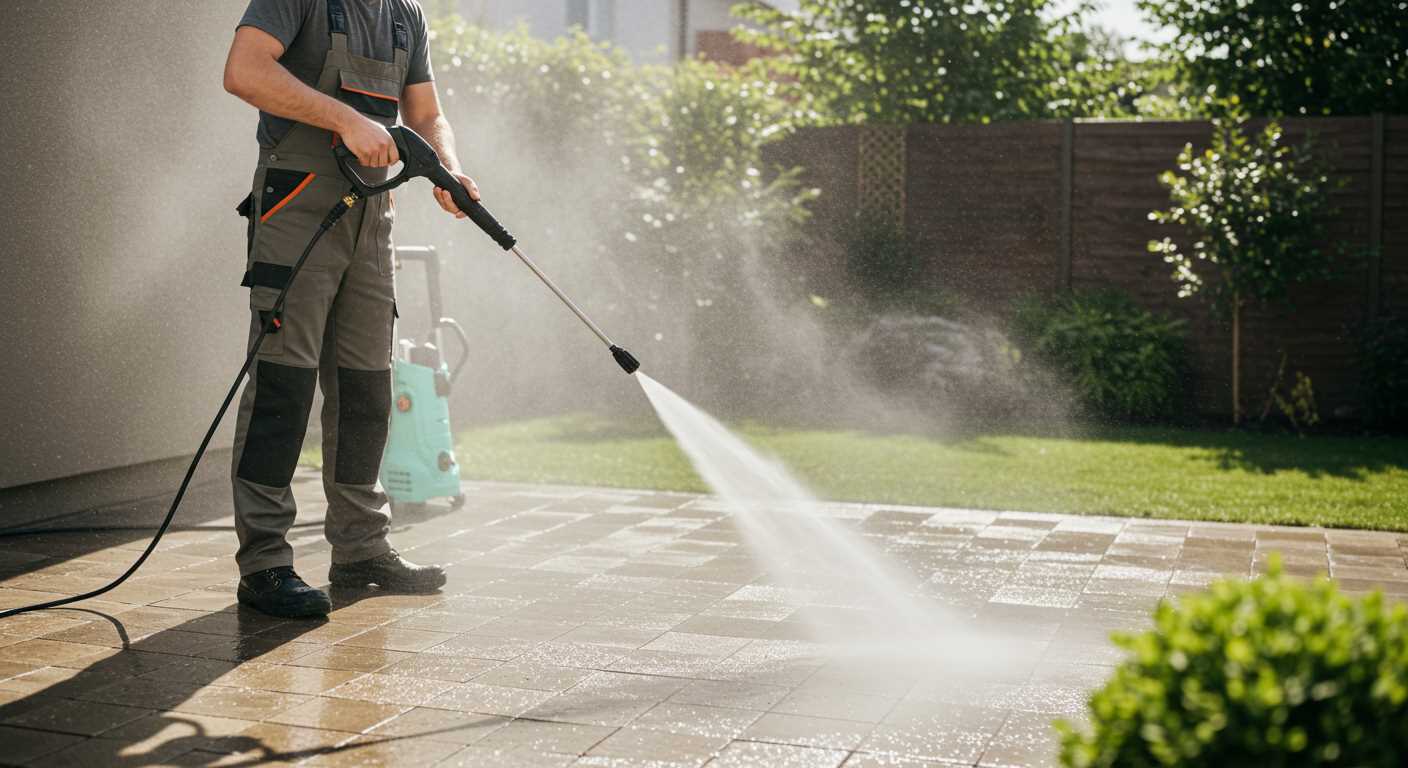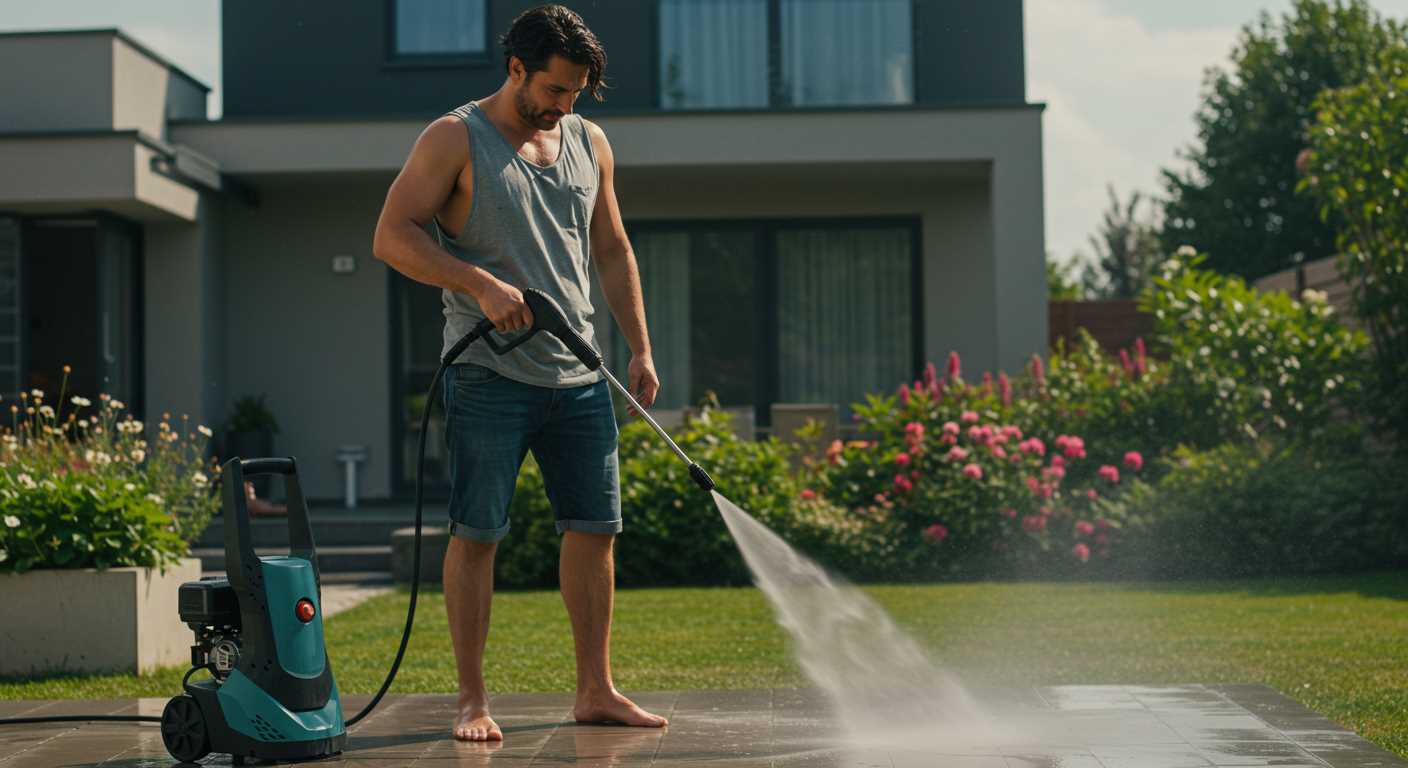Begin by ensuring all water is drained from your device. This step is vital to prevent freezing and potential damage. Identify the drainage points, typically found near the hose connections, and allow the fluid to flow out completely. Running the machine briefly without water can also assist in clearing any remaining liquid.
Next, inspect and disconnect all hoses and nozzles. Cleaning them from debris and storing them in a dry, sheltered area will enhance their longevity and functionality. These components are prone to wear and tear, making proper care a priority.
Consider protecting your equipment with a protective cover or tarp, especially if it will be kept outdoors. This will shield it from the elements and minimise exposure to moisture and dirt. Keep the unit in a dry, climate-controlled space if possible, as this further extends its usability.
Finally, refer to the manufacturer’s manual for specific maintenance advice tailored to your equipment type. Each design may have unique needs regarding storage procedures, so adhering to these guidelines ensures optimal performance once the next cleaning season arrives.
Preparation Steps for Seasonal Storage
Begin with draining all liquids from the engine and detergent tank. This helps prevent any freezing and potential damage during colder months. Check the fuel system too, ensuring it’s completely empty or add a fuel stabiliser if you prefer to leave some in.
Next, remove the nozzle and hose. This reduces tension and prevents kinks or damage while stowing away. Clean these components thoroughly and dry them before placing them in a secure location to avoid moisture accumulation.
Protecting Against Corrosion
Apply a light coat of oil to the metal components. This will reduce the risk of rust developing over time. It’s essential to keep the unit in a dry, sheltered area, ideally in a temperature-controlled environment, shielded from direct moisture.
Battery Care and Maintenance
If your unit has a battery, ensure it’s charged and disconnect it before stashing the machinery. Store the battery in a warm place, as extreme cold can diminish its lifespan significantly. Regular checks during the storage period are advisable to maintain optimal performance.
Preparing the Pressure Cleaner for Storage
Drain all fluids from the unit to prevent damage from freezing temperatures. Begin by disconnecting the water source and running the machine until it no longer expels any liquid. Pay close attention to the detergent tank, as residue can corrode components over time.
Remove the nozzle and clean it thoroughly, ensuring no blockages remain. This step will enhance performance when you return to using it.
Consider adding a stabiliser to the fuel if you have a petrol-powered model. This helps to maintain engine functionality by preventing fuel degradation. Run the engine for a few minutes to allow the treated fuel to circulate.
Examine all hoses and fittings for wear and tear. Replace any damaged parts before storing, as this can save time and expense in the long run.
Finally, cover the machine with a protective tarp or cloth to keep dust and debris away during the off-season. Storing in a cool, dry location will further help maintain its condition.
Draining the Water from the System
Begin by disconnecting the device from any power source and water supply. Take your time to ensure complete detachment, as residual pressure may still exist.
Steps to Follow
- Position the unit on a level surface for stability.
- Locate and open the drain plug or valve. This is usually found on the underside or near the pump. Use a bucket to catch the expelled water.
- After draining, activate the spray gun momentarily to release any remaining liquid within the system. Holding the trigger will help remove trapped water.
- Close the drain plug securely once complete. Ensure that there are no leaks.
In addition to draining, consider running the machine with a winter formula antifreeze solution. This process protects seals and components from freezing temperatures.
Final Checks
- Inspect hoses and connections for any signs of wear or damage.
- Store accessories separately in a dry location to prevent mould or mildew.
By diligently following these steps, I have avoided costly repairs and extended the lifespan of my devices over the years. Proper preparation is key to longevity and performance.
Cleaning the Components of Your Equipment

Remove any debris from the housing, ensuring all surfaces are free from dust and residue. This helps maintain optimal airflow and cooling, preventing potential overheating during future use.
Cleaning the Spray Gun and Nozzles
- Dismantle the spray gun according to the manufacturer’s instructions.
- Rinse out any leftover cleaning solution or contaminants with clean water.
- Inspect nozzles for clogs and clean them thoroughly with a soft brush or needle if needed.
- Soak any stubborn residues in a mixture of vinegar and water to break down deposits.
Checking Filters and Screens
- Examine the water inlet filter for blockages; clean or replace if necessary.
- Remove and rinse any additional screens to promote healthy water flow.
Using a soft cloth, wipe down the internal components, avoiding any aggressive cleaners that might damage delicate parts. After cleaning, dry everything completely before placing your equipment into storage.
Changing the Oil for Winter Storage

Draining and replacing oil is a fundamental step to ensure long-lasting performance. Start with warming the engine slightly. This enhances oil fluidity, making it easier to remove. Ensure the machine is turned off and disconnected from any power source.
Oil Replacement Procedure
Follow these steps to change the lubricant effectively:
- Locate the oil drain plug, usually positioned at the bottom of the engine.
- Place a container underneath the plug to catch old oil.
- Remove the plug carefully and allow the oil to drain completely.
- Once drained, replace the drain plug tightly.
- Add new, manufacturer-recommended lubricant through the fill cap.
- Check the oil level with the dipstick and add more if necessary.
Oil Type and Maintenance Tips

Select an oil type suited for the specific machine model. Consult the user manual for exact specifications. Generally, synthetic oil is preferred due to its temperature resistance and stability.
| Oil Type | Viscosity Rating | Temperature Range (°C) |
|---|---|---|
| Synthetic | 5W-30 | -20 to 40 |
| Conventional | 10W-30 | -10 to 35 |
After changing the lubricant, run the engine for a few minutes. This allows the new oil to circulate, lubricating internal components. Turn it off and recheck the oil level one last time. Store the machine in a dry place, free from humidity, to protect the engine and ensure optimal performance next season.
Disconnecting and Storing the Hoses
Begin by detaching both the high-pressure and garden hoses from the unit. This prevents any remaining water from freezing inside the hoses which could cause damages. Make sure to release any built-up pressure by squeezing the trigger on the gun while it is still attached to the hose.
After disconnecting, drain the hoses thoroughly. Hang them in a vertical position to allow any excess water to escape. If possible, lay the hoses out flat to prevent kinks, ensuring they maintain their shape and flexibility for the next use.
Coiling the hoses loosely is the next step. Avoid tight coils that can lead to wear and tear. Use hose storage reels or simple hooks to keep them tidy and off the ground, protecting them from dirt and potential damage.
Caring for the Connections
Inspect the connections for any signs of wear. Replace any cracked or worn couplings to prevent leaks during future use. Consider applying plumber’s tape to threaded connections to ensure a tight seal. This proactive touch will prolong the longevity of the fittings.
Storing in an Appropriate Environment

Place the hoses in a dry, sheltered area away from direct sunlight. Excessive heat can degrade the material over time. Keeping them at a consistent room temperature will maintain their integrity during the colder months.
Protecting the Electric Motor or Engine
Remove any debris and dirt from the exterior of the electric motor or engine. A clean surface helps in identifying issues later, ensuring that dust doesn’t impede functionality.
Ensure all electrical connections are secure and free from corrosion. Apply a thin layer of dielectric grease to connectors to prevent moisture-related damage during cold months. This simple step can significantly extend the lifespan of the electrical components.
If the model uses a brush motor, consider inspecting and replacing the carbon brushes if they show excessive wear. This not only maintains performance but also avoids potential damage during operation next season.
For gasoline engines, follow guidelines to protect against fuel degradation. Storing with a fuel stabiliser mixed into the tank can safeguard against gumming and corrosion, promoting seamless performance when reactivated. Always run the engine for a few minutes after adding the stabiliser to allow it to circulate properly.
Consider wrapping the motor or engine with a breathable cover to protect against dust and moisture, while still allowing ventilation. Avoid using plastic, as it can trap humidity, leading to corrosion.
Finally, keep it in a dry, well-ventilated space, away from extreme temperatures. Protecting the motor or engine appropriately ensures that everything operates smoothly once the warm season returns.
Choosing the Right Storage Location
Select a dry, moisture-free environment away from extreme temperatures. A garage or shed is preferable, provided it is insulated. Avoid placing it directly on a concrete floor; consider a wooden pallet or shelf to keep it elevated and reduce contact with cold surfaces.
Ensure the location is well-ventilated to prevent dampness, which can lead to corrosion or mildew. If possible, utilise a space that remains above freezing during cold months. This will help protect internal components from damage due to freezing temperatures.
Securing Against Pests
Check the area for potential pest problems. Rodents or insects may seek shelter in equipment, so sealing any gaps and storing items away from walls can deter infestations. Use airtight containers for smaller accessories to keep them protected.
Access Considerations

Choose a location that allows easy access. Ensure that pathways are clear, allowing for quick retrieval when needed. Avoid stacking heavy items on top of your equipment, which can cause damage and make it difficult to reach when required.
Inspecting the Equipment Before Spring Use
Begin each season with a thorough examination of the machinery. Inspect hoses for any wear or cracks. Look for signs of deterioration, as these can lead to leaks or bursts during operation.
Check the Connections
Verify that all connections are secure. Loose fittings can cause diminished performance or loss of pressure. Tighten any connections that appear to be loose, but avoid overtightening to prevent damage.
Examine the Nozzle and Spray Gun
Inspect the nozzle for clogs. A blocked nozzle will affect the spray pattern. Clean it using a small brush or by soaking it in soapy water if necessary. Ensure that the spray gun operates smoothly; check for stiffness or resistance when pulling the trigger.
Review the fuel system if your equipment is engine-powered. Look for leaks around the fuel lines and inspect the fuel filter. Replace the filter if it’s dirty or shows signs of wear.
Finally, test all safety features. Ensure automatic shut-off switches and pressure relief valves respond correctly. Malfunctioning safety mechanisms can pose risks during use.
FAQ:
What are the key steps to prepare a pressure washer for winter storage?
To prepare a pressure washer for winter storage, you should follow these steps: First, turn off the machine and disconnect it from the power source. Next, drain the water from the pump by running the machine for a few seconds without any water supply. After that, it’s advisable to add a pump protector or antifreeze to prevent any internal components from freezing. Make sure to remove any detergent or solution from the tank and clean any nozzles or accessories. Finally, store the pressure washer in a dry, sheltered location away from extreme temperatures.
How can I prevent damage to my pressure washer while it is in storage during winter?
To prevent damage to your pressure washer during winter storage, ensure that all water is thoroughly drained from the machine to avoid freezing in the pump. Using a pump protector or antifreeze can provide additional protection. It’s also wise to clean the filters and nozzles to avoid clogging. Store the pressure washer in a climate-controlled environment if possible, as significant temperature fluctuations can harm the unit. Keeping it covered or in a protective case could also shield it from dust and moisture.
Is there anything specific I should do with gas-powered pressure washers before winter storage?
Yes, for gas-powered pressure washers, it is recommended to drain the fuel tank or add a fuel stabiliser to prevent the gasoline from going stale during storage. Run the engine for a few minutes to circulate the stabiliser through the fuel system. It’s also important to change the oil before storing the machine, as old oil can contain contaminants that can damage the engine. Additionally, removing the spark plug and adding a few drops of oil can help lubricate the cylinder and prevent corrosion.







